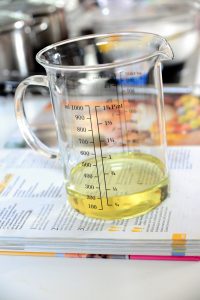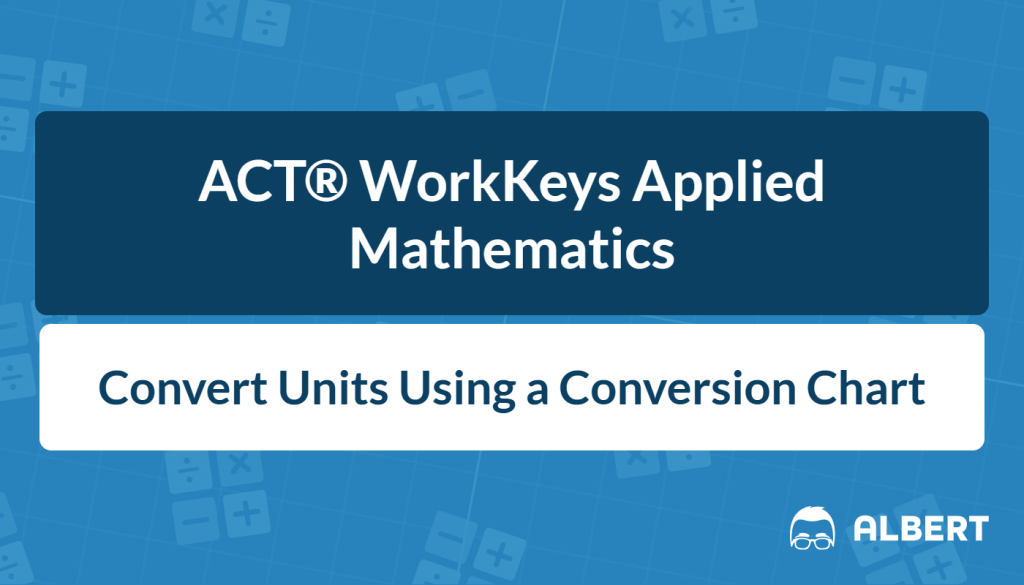Knowing how to convert units using a conversion chart simplifies many everyday tasks. It is essential for tests like the ACT® WorkKeys Applied Math Test, where accurate measurements matter. This article aims to clarify unit conversion and provide practical steps and examples. By the end, you’ll confidently use conversion charts in real-life situations.
What We Review
Understanding Unit Conversion
Unit conversion is changing a measurement from one unit to another. This skill is important because different countries and fields use different ways to measure things.
To convert units, you use a conversion factor. This is a ratio that shows how one unit relates to another. For example, knowing that one inch equals 2.54 centimeters helps when switching between metric and imperial systems. Being good at unit conversion means moving between different units quickly and accurately.
The Importance of Conversion Charts to Quickly Convert Units
A conversion chart is helpful for anyone who needs to convert units. It is a quick guide showing equal values in different measurement systems. This helps you find conversion factors without having to memorize them. The ACT® WorkKeys Applied Math provides many conversion factors on its formula sheet.
Step-by-Step Guide to Using a Conversion Chart
Unit conversion can seem tricky, but a conversion chart makes it easier. Here’s a simple guide to help you with your conversions.
First, gather the measurements you want to convert and find your conversion chart. Make sure the chart has both the starting unit and the unit you want.
Next, find the conversion factor. This is the number you will use to convert units. It will be listed on the chart between the two units you selected.
Here’s a quick summary of the steps:
- Identify the starting and desired units.
- Locate the conversion factor on the chart.
- Multiply (or divide) by the conversion factor.
- Check your answer for accuracy.
Always review the conversion factor to ensure it fits your problem.
Identifying Units and Conversion Factors to Convert Units

Before starting any conversion, make sure to identify the units you are using. Check both the starting unit and the target unit in your conversion chart. This step helps you use the right conversion factor.
Performing the Conversion
After finding your conversion factor, it’s important to use it with the original measurement correctly. Using fractions and canceling units can be very useful for this process. Typically, you will multiply the original value by the conversion factor to change the units. However, there are situations where you may need to divide, especially if you are converting back to the original measurement.
For example, to convert inches to centimeters, multiply by the factor on your chart. Let’s say you want to convert 10 inches to centimeters. With the conversion factor of 1 \text{ inch} = 2.54 \text{ centimeters} , you would set it up like this:
10 \text{ inches} \times \frac{2.54 \text{ cm}}{1 \text{ inch}} = 25.4 \text{ cm}Notice how the “inches” units cancel out, leaving you with centimeters.
Conversely, you would divide if you want to convert from centimeters back to inches. For instance, converting 25.4 centimeters back to inches involves dividing by the conversion factor:
25.4 \text{ cm} \times \frac{1 \text{ inch}}{2.54 \text{ cm}} = 10 \text{ inches}Again, the “centimeters” units cancel, leaving you with inches. By using this method of multiplying and dividing with conversion factors, you can ensure accurate conversions and better understand the relationship between different units.
Checking Your Work
Always check your final answer to make sure it makes sense. Look back at the starting and ending units to confirm they match your original goal. This step can help you find any mistakes in your calculations.
Common Conversion Factors You Should Know to Easily Convert Units
Knowing common conversion factors can make your unit conversion easier. These factors help you understand different measurement systems.
Here are some important conversion factors you should know:
- Length: 1 inch = 2.54 centimeters, 1 mile = 1.609 kilometers
- Volume: 1 gallon = 3.785 liters, 1 cup = 240 milliliters
- Weight: 1 pound = 0.453 kilograms, 1 ounce = 28.35 grams
Review these key conversions often to prepare well.
Practice Problems: How to Convert Units
Practice is essential to mastering unit conversions. Solving different problems helps strengthen your understanding and build your confidence. The more you practice, the easier it becomes.
When you work on problems, use a straightforward method. First, identify the units you are working with. Next, find the conversion factor you need. Finally, do the conversion step by step.
Regular practice can help you spot mistakes and improve your accuracy.
Practice Problem Set
Try these problems to improve your unit conversion skills:
- Convert 5 miles to kilometers.
- How many quarts are in 3 gallons?
- Change 10 pounds to kilograms.
- Convert 30 centimeters to inches.
Here are the answers to the conversion problems:
- To convert miles to kilometers: 1 \text{ mile} = 1.61 \text{ kilometers} . For 5 miles: 5 \text{ miles} \times 1.61 \text{ km/mile} = 8.05 \text{ kilometers} . So, 5 miles is about 8.05 \text{ kilometers} .
- To convert gallons to quarts: 1 \text{ gallon} = 4 \text{ quarts} . For 3 gallons: 3 \text{ gallons} \times 4 \text{ quarts/gallon} = 12 \text{ quarts} . So, 3 gallons is about 12 \text{ quarts} .
- To convert pounds to kilograms: 1 \text{ kilogram} = 2.2 \text{ pounds} . For 10 pounds: 10 \text{ pounds} \times \frac{1\text{ kilogram}}{2.2\text{ pounds}} = 4.5 \text{ kilograms} . So, 10 pounds is about 4.5 \text{ kilograms} .
- To convert centimeters to inches: 1 \text{ inch} = 2.54 \text{ centimeters} . For 30 centimeters: 30 \text{ cm} \times \frac{1 \text{ inch}}{2.54 \text{ cm}} = 11.811 \text{ inches} . So, 30 centimeters is approximately 11.81 \text{ inches} .
Use these questions to check your knowledge. After solving, compare your answers to the conversion factors you learned before. This will help you see what you know well and what you can work on.
Tips for Mastering How to Convert Units
Consistency is key to getting good at unit conversions. Regular practice helps improve your skills and accuracy. Practicing every day helps you remember conversion factors and methods. Keep units visible when you do calculations. Writing out units helps you avoid mistakes and keeps things clear. It also helps you follow your conversion steps easily.
Real-World Applications of Unit Conversion
Unit conversion is important in many areas, such as healthcare, engineering, and cooking. For example, pharmacists change prescription units to give the right dosages, which helps keep patients safe and improves treatment.
In construction, workers convert measurements to match design needs. This helps ensure that buildings are safe and built correctly. Cooking also often requires changing units to adjust recipes for different numbers of servings.
Learning how to convert units is useful for planning and completing tasks in these situations. It also allows for more flexibility and accuracy in everyday tasks.
Conclusion: How to Convert Units
Knowing how to convert units is important for school and everyday tasks. Using conversion charts can help you solve related problems more easily. It’s important to practice to get better at this skill.
Extra resources can be very helpful if you are studying for tests or need this skill for practical reasons. You can find online tools, downloadable charts, and practice worksheets to support your learning. Explore these resources to strengthen your understanding and improve your unit conversion skills. They can boost your math skills and confidence significantly.
Sharpen Your Skills for ACT® WorkKeys Applied Math
Are you preparing for the ACT® WorkKeys Applied Math test? We’ve got you covered! Try our review articles designed to help you confidently tackle real-world math problems. You’ll find everything you need to succeed, from quick tips to detailed strategies. Start exploring now!
- Ratios, Proportions, and Rates: Solving Real-World Problems
- Understanding Rates with Fractions: From Production to Speed
Need help preparing for the ACT® WorkKeys Applied Math Test?
Albert has hundreds of ACT® WorkKeys practice questions and full-length practice tests to try out.








